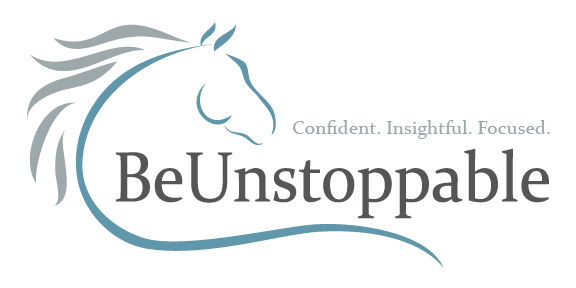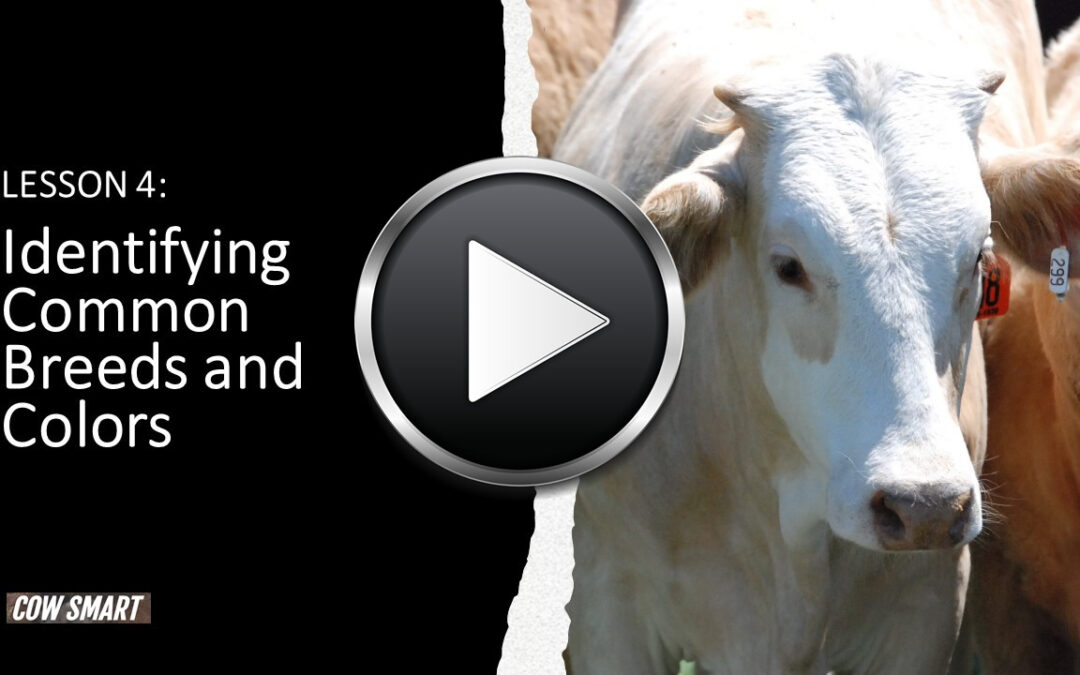

LET US KNOW YOUR THOUGHTS
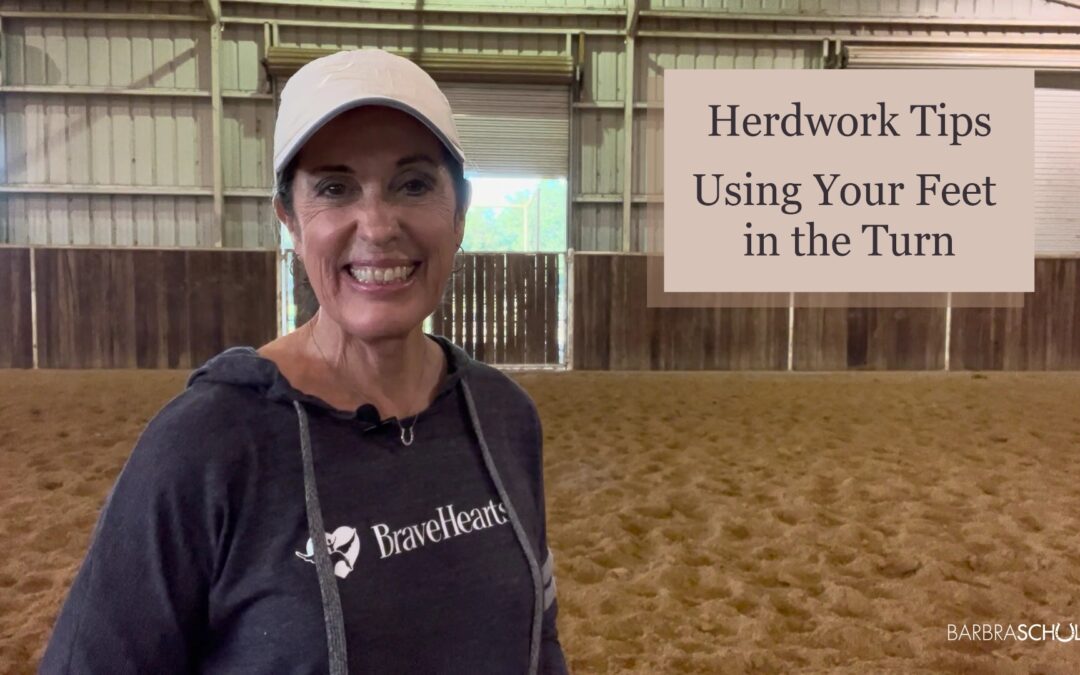
Herdwork Tips – Using Your Feet in the Turn
LET US KNOW YOUR THOUGHTS 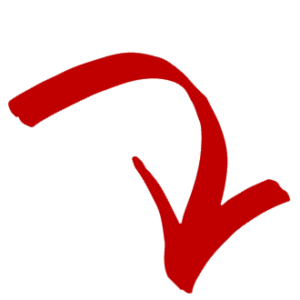
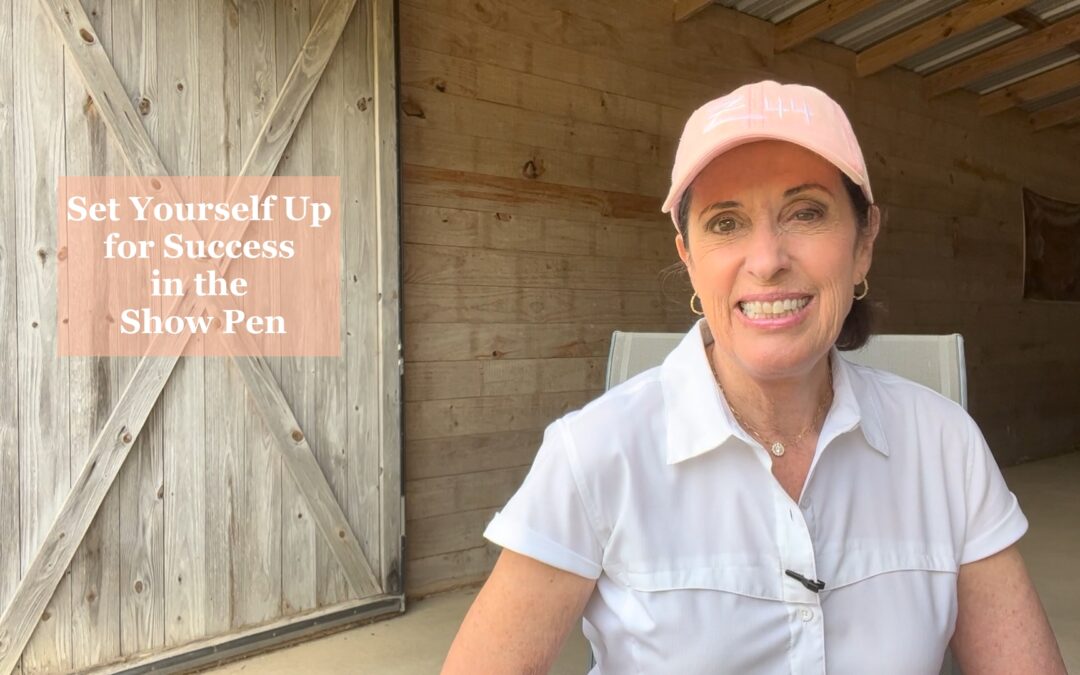
Set Yourself Up for Success in the Show Pen
There is a big shift happening in the world of horse competition today.
The old model of “I’m an uninformed amateur who’s messing up my horse, and I’ll never get it” is fading in the background. The days of ‘there’s only winning and losing’ are becoming a thing of the past.
Competing is so much more than that. It’s courageous and thrilling – and that’s worth everything.
The old approach wherein everyone believes that progress has to be painfully slow and measured only on the outside is anything from incredibly frustrating – to shaming – to unsatisfying.
Plus, it inhibits your ability to ride at ease, think for yourself, be confident – and feel your horse.
Today’s video is all about a new mindset and how to set you and your horse up for success in the show pen.
Transcript:
For any horse and rider team to perform at peak levels in competition, both must be communicating back and forth as seamlessly as possible.
This type of conversation begins when you’re calm, focused, immersed in the moment, and supporting your partner. Nothing more. You’re not aware of the weather, who’s judging, or who’s watching.
You ride for that insatiable feeling of being at one with a horse. Of course, we all want to win. But feeling in sync with a horse is nothing short of heaven.
That ability for you to perceive your horse moment-to-moment begins with a ‘slow on the inside’ feeling and a positively engaged mind.
It’s a feeling is sublime calmness, with a keen awareness – as if all your senses have been turned on. And in addition to incredible synchronicity with the horse, you can ‘ride through mistakes’ and make good decisions when things go off the rails.
In this new shift, you are beginning to understand that you are responsible for your own state of mind, body, and emotion – no one else can do it for you.
You are also responsible for discovering, understanding and practicing the pieces and parts that add up to competitive excellence – and then systematically cultivating those skills and behaviors – for a lifetime.
In competition, this begins by setting your own ‘True North,’ that guiding compass that is authentic and holds your unique reasons for riding and competing. Those reasons are yours, and then you summon the courage to create a bold vision and believe in yourself.
You also know you are not perfect (and never will be) because the perfection mindset dwells on what’s not going well. Excellence says, ‘Take me to the next mountain top; I’m ready.
On show day, the goal is to be your collective best with your horse. You are there to show your strengths and shore up your weaknesses.
Showing is laying it all on the line at a specific place and time in front of other people. Sometimes you win, and sometimes you lose, but you know you have done everything possible to prepare at the end of the day.
At the end of the day or later at home comes a review. What went well? What worked for your horse? How did you two do together? Celebrate your strengths and accomplishments and be detective-like for your next steps to improve. The love of competition and the pursuit of excellence continues.
Competitive excellence is not only what you see on the outside – it’s an experience shared between the inside of the rider’s soul and the horse’s spirit. It’s working hard individually (and together), getting ready, walking into the show pen, staying cool under pressure – seeing the truth when it’s all done, and then craving more improvement.
The desire for constant growth is never viewed with a depredating eye – only with the constant encouragement of, “Here you go. Here’s your next step. Enjoy!”
This mindset and practicing the steps are your jobs, along with the support of others – but you are still the one who is responsible for going for the gusto.
Embrace the shift, the joy, and the fun. It truly is all about the journey.
Click Here to sign up for my 4-Part Podcast Series, Shine in the Show Pen – which is available to download for a short time. They are my gifts to you.
Please leave a comment for me. I LOVE hearing from you!
LET US KNOW YOUR THOUGHTS 
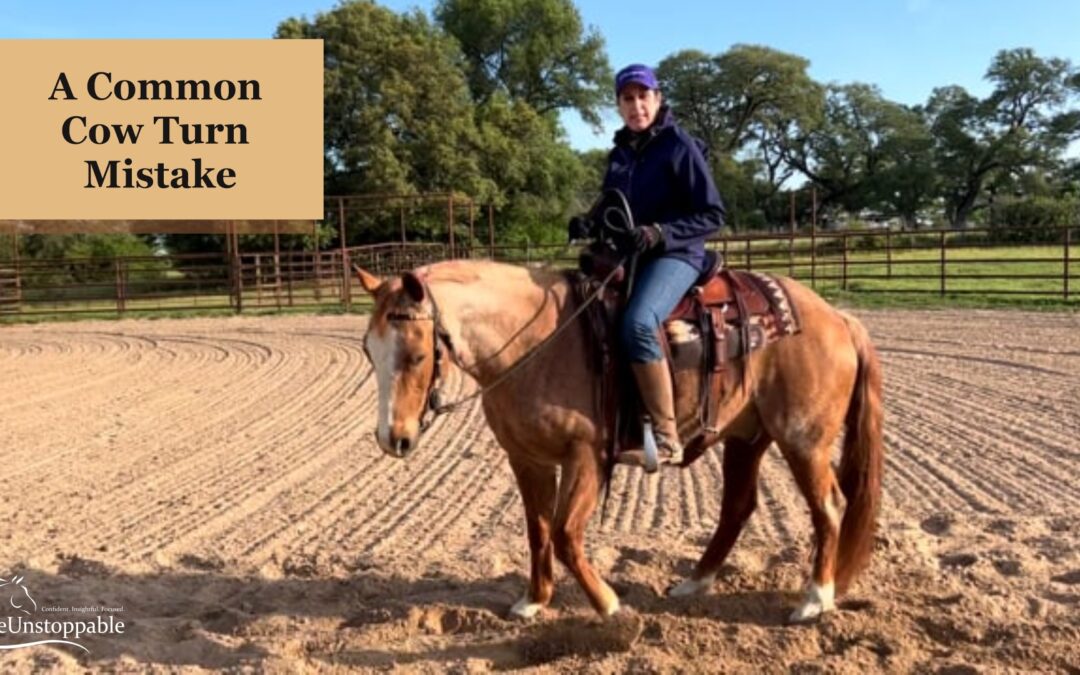
A Common Cow Turn Mistake
I have a short video that explains a common error when riders make cow turns.
They tend to release a horse from remaining on its hindquarters before the turn is complete. This often happens towards the end of the turn. It’s caused by using your feet too soon, or releasing the reins too quickly – or both.
It’s easy to want to “get going with that cow,” (-: and be unaware you’re rushing.
There’s no transcript this time, but the video shows how you can “fall out” of a turn – and how to avoid this error.
LET US KNOW YOUR THOUGHTS 
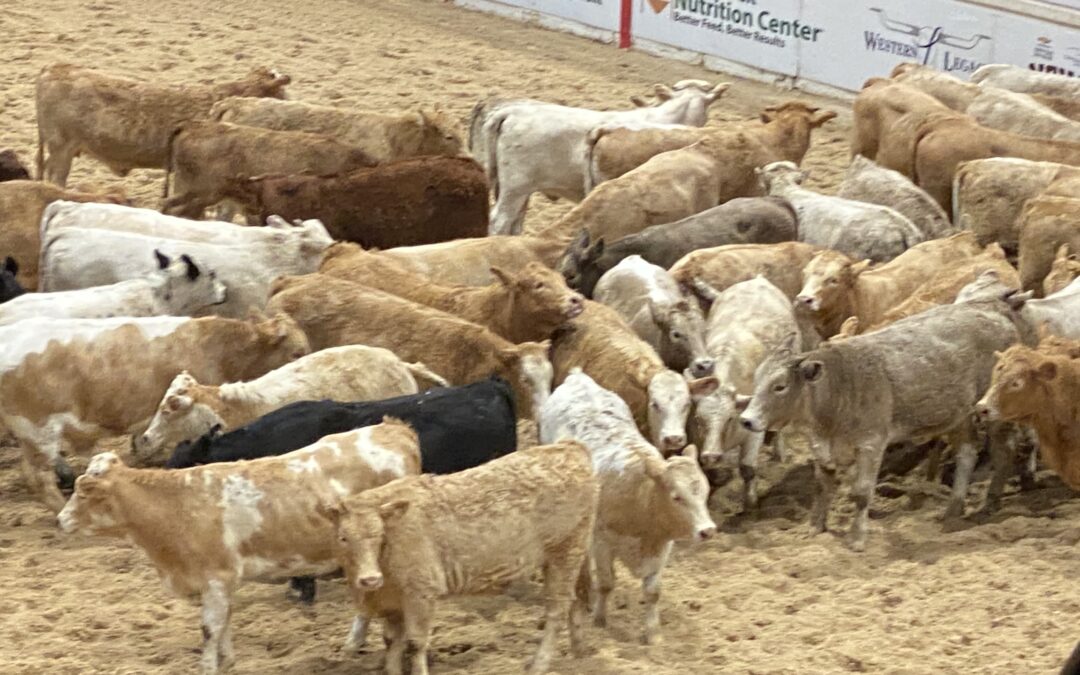
Seven Cow Behavior Facts Every Rider Should Know
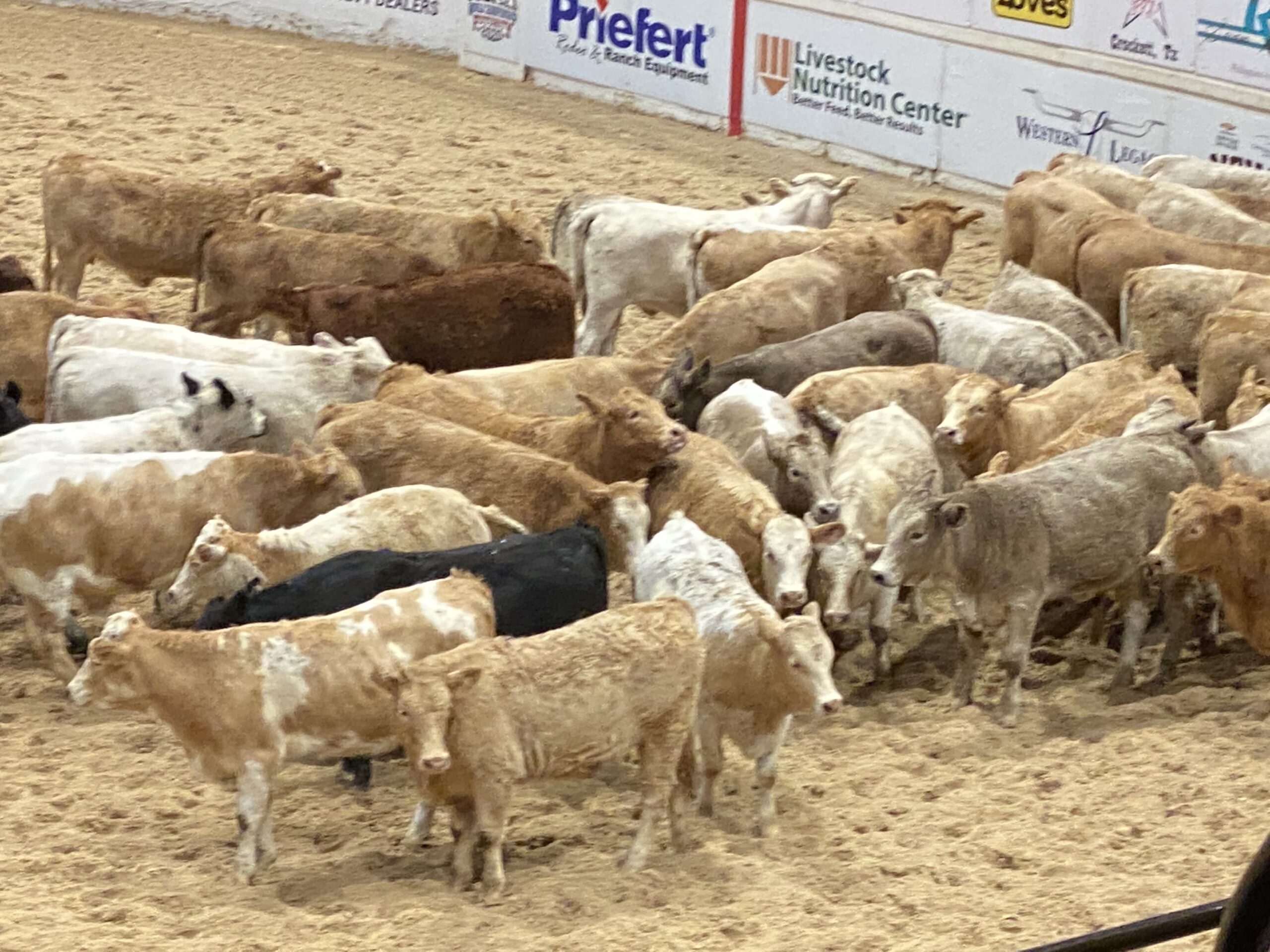
Those pesky cattle! When you think you understand them, they surprise you!
Here are seven facts about cattle behavior to help you de-mystify understanding their behavior and to help you predict how they will act when separated from the herd (in cutting and herdwork) – or – when turned into the arena by themselves (for boxing or fence runs).
The seventh point is perhaps the most important for those passionate about showing in cattle events.
-
- Because cattle are herd animals, they seek to return to the herd for comfort and safety. While that may be an obvious fact, always strive to know the location of the herd environment. It could be a cattle holding pen behind the arena or cattle together on the back fence in the arena.
- When a herd is put in a new environment (think arena) for the first time, they are unsure of where the ‘herd body’ naturally is. That is why ‘fresh cattle’ are ‘settled,’ which means a rider trains the herd on horseback to find a ‘safe’ place at the back fence of the arena.
- Riders who draw early in a cutting or herd work set of cattle find that early in the draw, cattle are not as familiar with the herd environment and tend to stay ‘out in front’ of a rider more readily. As more riders work in the group, cattle become conditioned to going away from the back fence and then returning to it. It’s not unusual for cattle late in the set to be aggressive in their attempts to return to the herd.
- Cattle have different temperaments. Some, by nature, are more naturally aggressive (usually the wilder cattle). In contrast, others tend to be ‘quiet’ and happy to remain away from the herd environment (usually the more laid-back temperaments).
- Riders can best evaluate a cow’s temperament when near a horse. The wilder cattle want to get away from a horse as quickly as possible, while a more ‘friendly’ cow will demonstrate an interest in a horse and appear comfortable.
- Controlling a cow is a game of angles and positioning the horse to prevent a cow from going where we don’t want it to go or actively turning or moving it.
- For cow events, you can set yourself apart from your competitors by becoming a student of cow behavior, angles, positions, and speed of approaching a cow as fervently as you work on your horse riding skills.
- Because cattle are herd animals, they seek to return to the herd for comfort and safety. While that may be an obvious fact, always strive to know the location of the herd environment. It could be a cattle holding pen behind the arena or cattle together on the back fence in the arena.
- When a herd is put in a new environment (think arena) for the first time, they are unsure of where the ‘herd body’ naturally is. That is why ‘fresh cattle’ are ‘settled,’ which means a rider trains the herd on horseback to find a ‘safe’ place at the back fence of the arena.
- Riders who draw early in a cutting or herd work set of cattle find that early in the draw, cattle are not as familiar with the herd environment and tend to stay ‘out in front’ of a rider more readily. As more riders work in the group, cattle become conditioned to going away from the back fence and then returning to it. It’s not unusual for cattle late in the set to be aggressive in their attempts to return to the herd.
- Cattle have different temperaments. Some, by nature, are more naturally aggressive (usually the wilder cattle). In contrast, others tend to be ‘quiet’ and happy to remain away from the herd environment (usually the more laid-back temperaments).
- Riders can best evaluate a cow’s temperament when near a horse. The wilder cattle want to get away from a horse as quickly as possible, while a more ‘friendly’ cow will demonstrate an interest in a horse and appear comfortable.
- Controlling a cow is a game of angles and positioning the horse to prevent a cow from going where we don’t want it to go or actively turning or moving it.
- For cow events, you can set yourself apart from your competitors by becoming a student of cow behavior, angles, positions, and speed of approaching a cow as fervently as you work on your horse riding skills.
